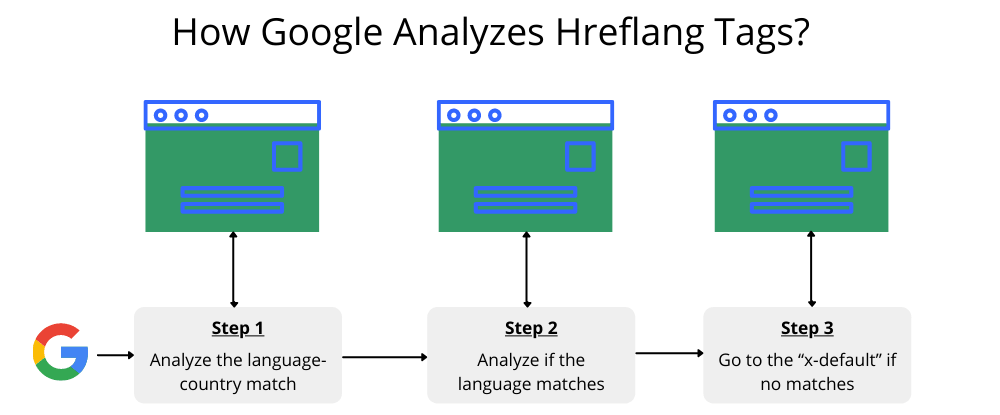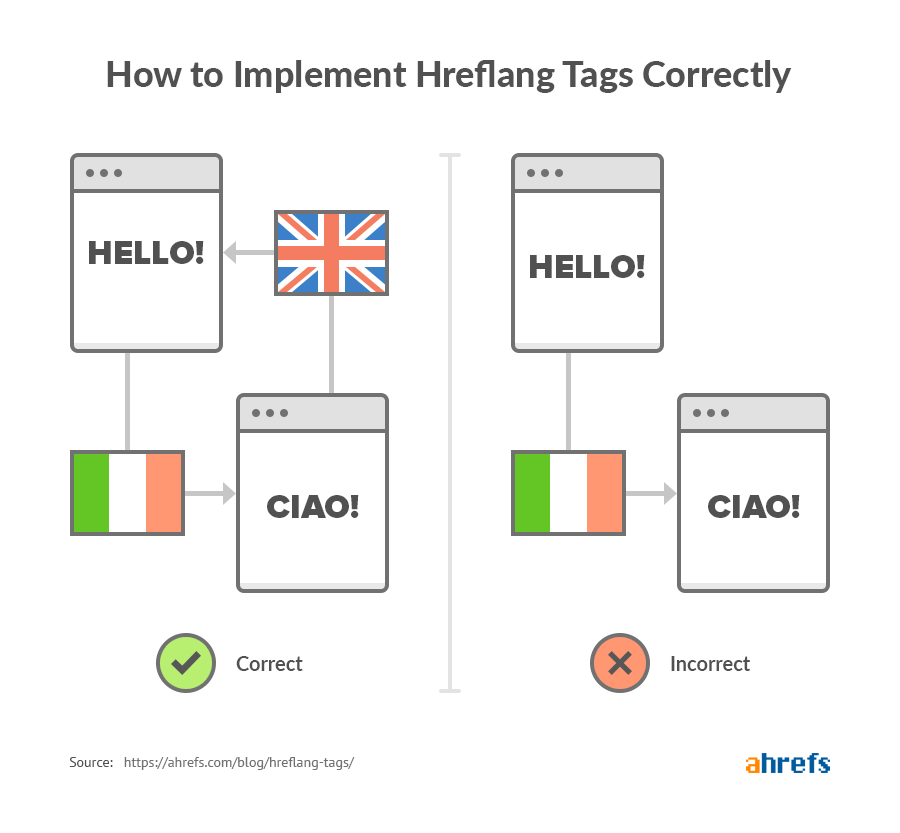Uncover the secrets of Hreflang Attribute – the key to international SEO success for your website. Don’t miss out!

Image courtesy of via DALL-E 3
Table of Contents
Introduction to Hreflang
When you are browsing the internet, have you ever noticed how some websites automatically show up in your preferred language? That’s all thanks to something called Hreflang! In this section, we’ll explore what Hreflang is and why it plays a crucial role in helping websites communicate with search engines effectively. Let’s dive in!
What is Hreflang?
Imagine you are looking for information online, but the webpage you click on is in a language you don’t understand. Hreflang is like a magic marker that tells search engines which language or country a webpage is meant for. It’s like a helpful signpost that ensures you land on a page that speaks your language.
Why is Hreflang Important?
Hreflang is essential because it ensures that people like you and me can access the right version of a webpage. Imagine trying to read a page in Chinese when you only know English – confusing, right? Hreflang eliminates this confusion by making sure you see content that you can actually understand.
How Hreflang Works
The Hreflang tag is like a secret code that helps search engines find the right version of your website for users. Imagine you have a magical map that tells you which door to open to find the treasure – that’s what Hreflang does for your website.
Integration with Search Engines
Search engines like Google are like detectives trying to match the right website with the right person. When you use Hreflang tags, you’re giving them clues to solve the mystery. They know which version of your site to show to someone from France or someone who speaks Spanish.
Setting Up Hreflang
In this section, we will guide you through the process of setting up Hreflang on your website. Whether you’re a beginner or experienced in coding, implementing Hreflang is essential for ensuring that search engines display the correct language or country version of your web pages to users.

Image courtesy of www.semrush.com via Google Images
Using HTML
Setting up Hreflang using HTML involves adding specific tags to the code of your web pages. Here’s a step-by-step guide to help you:
1. Identify the language and country codes of the different versions of your pages.
2. Insert the Hreflang tag within the <head> section of your HTML code.
3. Use the following syntax to implement the Hreflang tag: <link rel="alternate" hreflang="[language_code]-[country_code]" href="https://www.yourwebsite.com/page-url" />
4. Repeat this process for each language and country variation of your pages.
Using Sitemap
If implementing Hreflang tags directly into your HTML seems complex, you can also set up Hreflang using an XML sitemap. Here’s how:
1. Create an XML sitemap that includes all the language and country variations of your web pages.
2. Add the Hreflang annotations to the XML sitemap by including the following code where necessary: <xhtml:link rel="alternate" hreflang="[language_code]-[country_code]" href="https://www.yourwebsite.com/page-url" />
3. Submit the updated XML sitemap to search engines like Google via Google Search Console.
By following these steps, you can effectively set up Hreflang on your website, improving the user experience and ensuring that search engines direct users to the most relevant versions of your content.
Common Mistakes with Hreflang
One common mistake that website owners make with Hreflang is using incorrect language or country codes. Imagine if you wanted to show French content to users in France, but instead, you used the code for Spanish. This mix-up can confuse search engines and display the wrong content to your audience. It’s like giving someone directions to the ice cream shop, but you accidentally lead them to the library!
Missing Hreflang Tags
Another mistake to watch out for is forgetting to include Hreflang tags altogether. These tags are like labels on a map, guiding search engines to the right versions of your webpages. Without them, search engines may not know which language or country your content is intended for, leading to a jumbled display of your site. It’s like cooking a delicious dish but forgetting to add the key ingredient, resulting in a bland meal that leaves everyone unsatisfied!
Testing Hreflang
Ensuring that your Hreflang tags are set up correctly is crucial for your website’s performance. Here, we will explore some tips and tools for testing Hreflang to make sure everything is in order.

Image courtesy of www.linkgraph.com via Google Images
Using Online Tools
There are various online tools available that can help you check if your Hreflang tags are correctly implemented. These tools can scan your website and provide you with a report highlighting any errors or issues with your Hreflang setup. Some popular tools include Hreflang Checker by Aleyda Solis and Hreflang Tags Testing Tool by Merkle.
Manual Testing
If you prefer a hands-on approach, you can manually check your Hreflang tags on your website. Simply inspect the code of your web pages and look for the Hreflang tags. Ensure that the language and country codes are accurate and correspond to the different language versions of your pages. You can also use browser extensions like Hreflang Tag Validator to assist you in this process.
Benefits of Hreflang
Implementing Hreflang on your website brings several benefits that can enhance both user experience and search engine optimization. Let’s explore how Hreflang can positively impact your site.
Improved User Experience
One of the primary benefits of using Hreflang is providing an improved user experience for visitors to your website. When users search for content in their preferred language or region, Hreflang ensures they are directed to the most relevant version of your site. This helps users easily find the information they are looking for, leading to higher engagement and satisfaction.
Better SEO Performance
Proper implementation of Hreflang tags can also significantly boost your website’s search engine optimization (SEO) performance. By signaling to search engines the language and region variations of your content, Hreflang helps ensure that your pages appear in the right search results for the right audience. This targeted approach can lead to increased visibility, higher rankings, and ultimately more organic traffic to your site.
When to Use Hreflang
If your website offers content in multiple languages, using Hreflang is crucial. Imagine you have a website with articles in English and Spanish. By using Hreflang tags, search engines like Google can accurately display the English version to users searching in English and the Spanish version to users searching in Spanish. This helps ensure that visitors are directed to the right language version of your content, improving their experience on your site.

Image courtesy of ignitevisibility.com via Google Images
Multiple Regional Versions
For websites that cater to different regions with specific content tailored to each location, Hreflang is essential. Let’s say you have a website selling products in the US and in UK markets. By implementing Hreflang tags, you can direct users searching from the US to see the US version of your website, while users from the UK will see the UK version. This customization based on region helps enhance user experience and ensures that visitors are viewing the most relevant content for their location.
By understanding when to use Hreflang based on the nature of your website, you can effectively target different language speakers and regional audiences, ultimately improving both user experience and SEO performance.
Real-World Examples
One prime example of a big brand effectively utilizing Hreflang is Nike. Nike’s website seamlessly adapts to users from different regions, displaying the appropriate language and currency based on the user’s location. This personalized experience enhances user satisfaction and increases the likelihood of completing a purchase.
Another notable example is Coca-Cola, whose global presence requires accurate language and regional targeting. By implementing Hreflang tags across their various country-specific websites, Coca-Cola ensures that users are directed to the most relevant content in their preferred language, improving overall user experience.
Small Business Success
On the other end of the spectrum, small businesses like a local bakery can also benefit from implementing Hreflang on their website. For instance, a bakery offering specialty treats in multiple locations can use Hreflang to present location-specific content to customers. This targeted approach can help small businesses attract and retain customers by providing them with tailored information in their preferred language.
Similarly, a boutique online retailer catering to diverse international customers can leverage Hreflang to provide a personalized shopping experience. By directing users to the correct language and currency options, the retailer can boost customer trust and satisfaction, leading to increased conversions and customer loyalty.
Conclusion
After delving into the world of Hreflang attributes, it’s clear to see how vital they are for websites. Hreflang acts as a guiding light for search engines, ensuring that users find the right language or regional version of a webpage. By using Hreflang correctly, websites can enhance their SEO performance and provide a seamless user experience.

Image courtesy of www.digitaldarts.com.au via Google Images
Key Takeaways
In essence, Hreflang is like a multilingual tour guide for search engines, directing them to the appropriate language or regional content. By incorporating Hreflang tags in the HTML of webpages or through XML sitemaps, websites can improve their visibility and relevance in the eyes of search engines. Additionally, by avoiding common mistakes in Hreflang implementation and regularly testing its setup, websites can maintain a smooth user experience and prevent SEO errors.
Looking Ahead
As the digital landscape continues to evolve, the importance of Hreflang for international websites cannot be overstated. Whether you’re a big brand or a small business looking to expand globally, utilizing Hreflang can make a significant difference in how your site performs in search results. Remember, proper Hreflang usage isn’t just about SEO—it’s about connecting with users in their own language and providing a tailored online experience.
Want to turn these SEO insights into real results? Seorocket is an all-in-one AI SEO solution that uses the power of AI to analyze your competition and craft high-ranking content.
Seorocket offers a suite of powerful tools, including a Keyword Researcher to find the most profitable keywords, an AI Writer to generate unique and Google-friendly content, and an Automatic Publisher to schedule and publish your content directly to your website. Plus, you’ll get real-time performance tracking so you can see exactly what’s working and make adjustments as needed.
Stop just reading about SEO – take action with Seorocket and skyrocket your search rankings today. Sign up for a free trial and see the difference Seorocket can make for your website!
Frequently Asked Questions (FAQs)
What Happens if I Don’t Use Hreflang?
If you don’t use Hreflang on your website, international users may face difficulties finding the correct language or country version of your pages. This can lead to confusion, lower user engagement, and ultimately impact your website’s international reach and visibility. Search engines may also have trouble understanding which version of your content to display to users, potentially affecting your SEO performance.
Can I Use Hreflang for Only a Few Pages?
Yes, you can use Hreflang for only a few pages on your website rather than implementing it across all pages. This is useful if you have specific content that is targeted towards different languages or regions. By selectively applying Hreflang tags, you can ensure that users are directed to the most relevant version of your content, improving their overall experience on your site.







